Nine artists talk zine fests, artistic influences, and the growing world of queer Asian zine makers.

November 14, 2018
Every fall, artists, publishers, and zine makers set up shop at New York’s zine fests—the New York Art Book Fair hits MoMA PS1 each September, then follows the NY Queer Zine Fair in October, and Comic Arts Brooklyn, which took place this past weekend. At NYABF, artist Xiao Mei’s table brimmed with colorful posters, enamel pins, and playful comics. Jenny Lin’s table at NYQZ featured the gothic horror comics and queer Brazilian zines they publish through B&D Press with Eloisa Aquino. And at Comic Arts Brooklyn, Jia Sung sold dreamy zines and queer tarot card deck alongside Sarula Bao, who premiered a new zine about a dream drag race cast.
All of these artists are a part of a growing and thriving international community of Asian zinesters. From the Bay Area to New York to London, queer Asian artists are adding inventive, radical creative work to the long tradition of zine-making. We spoke with nine zinesters and zine collectives from the US and UK about their artistic practices, influences, and communities.
Sunmi
sunmiflowers.com | @sunmiflowers
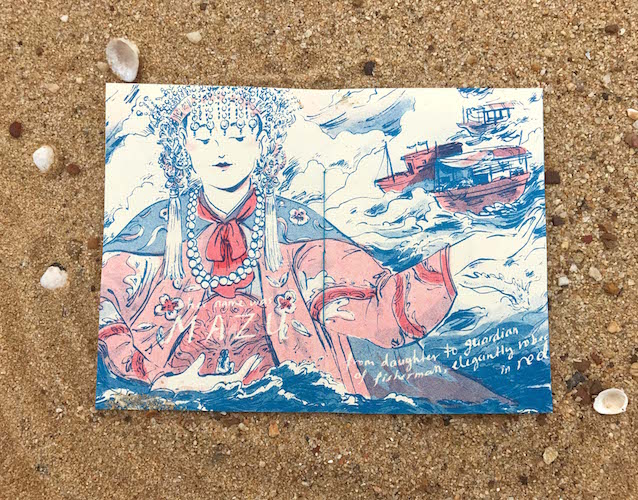 My work centers around emotional distance and fantastical femininity, rooted in my experiences as a queer diasporic Korean. Because of the alienation I felt growing up as a “goose child” (a child of immigrants where the father works in South Korea to support the family in another country) and as a closeted nonbinary, trans masc lesbian, I relied on storytelling and art to connect to other people, to affirm my own humanity and understand the humanities of others.
My work centers around emotional distance and fantastical femininity, rooted in my experiences as a queer diasporic Korean. Because of the alienation I felt growing up as a “goose child” (a child of immigrants where the father works in South Korea to support the family in another country) and as a closeted nonbinary, trans masc lesbian, I relied on storytelling and art to connect to other people, to affirm my own humanity and understand the humanities of others.
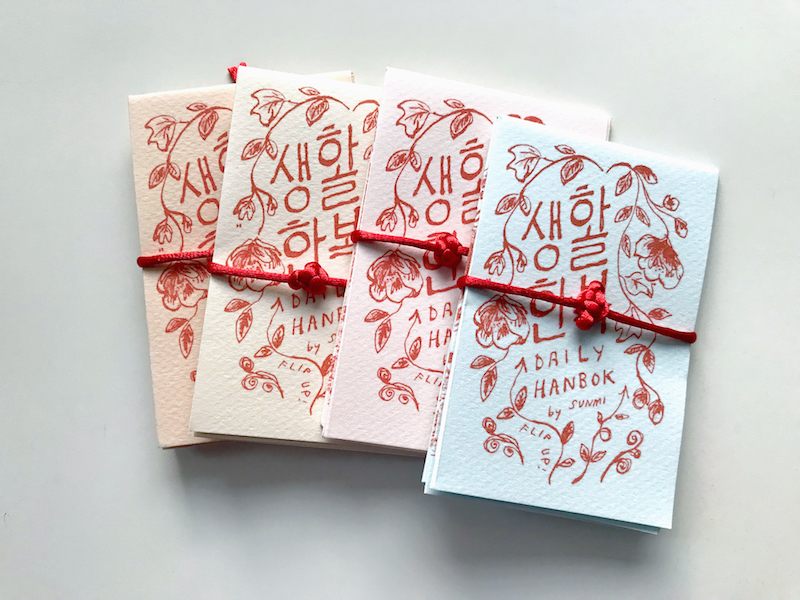
I first found out about zines through attending Small Press Expo in 2013, when I came to the East Coast to pursue a degree in illustration at the Maryland Institute College of Art. Since then, I was involved in my school’s sequential arts club, co-founded a small publishing press called Dandelion Wine Collective, participated in a number of comic and zine festivals, and created many of my own zines, most of which I prefer to print myself on a risograph and bind by hand. It reminds me of my childhood, when I made what were basically zines, and other paper crafts with my best friend at her house. I feel very fortunate to be friends now with many amazing cartoonists and zinesters, throughout the U.S. and worldwide.
The list grows, but right now I am excited by the work of Molly Liu, Margot Ferrick, Lee Lai, Carta Monir & Diskette Press, Black Josei Press, Hello Boyfriend, Quang Comics, and Press Press.
daikon*
daikon.co.uk| @daikon.zine

All of us met in solidarity spaces–some of us at a Black Lives Matter march in 2016, others of us at a university network for non-binary people and women of colour. We decided to form a creative platform for Southeast and East Asian non-binary people and women in the U.K. and Europe because we wanted to make space for important internal discussions about identity, politics, and solidarity in our local context. We noticed that many campaigns and conversations were taking place using the vocabulary of Asian American activism; however, we wanted to focus on our specific histories in order to make more meaningful connections. For example, the word “Asian” in the U.S.refers primarily to East Asian people; in the U.K., “Asian” means South Asian—this in itself creates some differences in the way our community is represented and organizes politically. The daikon* zine is a product of that consciousness—we wanted to make a publication that celebrates and centres marginalized voices; at the same time, we also wanted to build critical understanding of the ways in which we can resist oppression from our particular positions.

In addition to the zine, we have organised social events and workshops which bring people together in a physical space to meet and share experiences. A community cannot be forced into existence just on the basis of a shared aspect of identity and so we try to just get people together as much as we can in order for those friendships and connections to begin. As daikon* seems to be one of the first publications to explicitly target Southeast and East Asian non-binary and women’s voices in the U.K. and Europe we find that our readers are keen to engage in person and we are proud to be a part of the network of people that are forming under this identity banner. We hope that this network continues to grow alongside greater visibility of politicised East and Southeast Asians in this part of the world.
The zine is a medium that really works for us in terms of both production and distribution. Zines are historically personal and political publications; self publishing is important to us as it allows us to be in control of our own narrative and to curate our space as we want it to be. On the distribution side of things we find that zine fairs and small scale launches have been a key part of the success of our project. We do have our zines on sale in many bookshops in the U.K. and abroad, which we are very proud of, but actually having the chance to sell them ourselves at fairs and physically hand them over to someone is great for keeping us constantly engaged with what we’ve produced. Being able to speak with every person that buys one at a fair, telling them more about the zine and in many cases asking them to contribute is a really rewarding part of the process. The community of other zine makers here is relatively small but it is really supportive and encouraging and we are so glad to be a part of it all.

We have met many amazing zine makers since we began. Recently we went to the U.K.’s first POC zine fair, Over Here Zine Fest where we were tabling alongside Black Fly Zine, OOMK, Jacq Applebee, Rooted Zine, QTPOC Nottingham and Poor Lass Zine. It was amazing to be in a POC centred space and to meet zine makers based in the North of England as we are based in London. We are most excited however about those who contribute to daikon* zine; every illustrator and writer who has published their work with us has been astoundingly talented! We encourage anyone looking for writers and illustrators to look through our issues and contact anyone who whose work catches your eye.
Sarula Bao
 Growing up I’ve always loved comics, and in college I got my own start publishing a graphic novel in academic circles that combined illustration and ethnography, which was something I worked on for two years. While this experience had been deeply fulfilling and enriching, I was inspired by the experimental indie zines that I was seeing and was interested in making work that used a different format to tell either personal stories or narratives about people and ideas that others could connect to.
Growing up I’ve always loved comics, and in college I got my own start publishing a graphic novel in academic circles that combined illustration and ethnography, which was something I worked on for two years. While this experience had been deeply fulfilling and enriching, I was inspired by the experimental indie zines that I was seeing and was interested in making work that used a different format to tell either personal stories or narratives about people and ideas that others could connect to.
Ultimately it was an interest in expanding my illustration work, format and the styles that I used, and telling stories in a book format that made zines a good step for me. I could experiment with something new, create narratives, make multiple copies and also keep them all short term projects. It’s been great motivating myself to continue pushing my personal work in new ways and to tell the largely Chinese and queer stories that I experience.

I wanted to continue to be involved in the community and learn more about the process of riso printing and so I started working with Endless Editions, who publish and support artist’s books and zines. Through working with them I got to meet their clients and friends who are also involved in publishing and art, and it’s been an incredible feeling to work in that space surrounded by like-minded people. It’s a feeling I haven’t had since going to art school, and it’s so lovely to find this community and work side by side with them now. Some zinesters I’m super excited about include my dear friend and tablemate Jia Sung, as well as Other Publishing!
Xiao Mei
 I started making zines in my sophomore year in college, after learning what zines and risographs are through my professors Josh Cochran and Sam Weber. I did my first zine with Mountain Dog, and two years later, we formed Little Mountain Press. For my first zine fest experience, I was very lucky to have the chance to show my works at the 2nd Annual Print and Zine Festival organized by Got a Girl Crush. I was overwhelmed by how supportive everyone was at the fair, and it motivated me to create more works. I am very grateful for the zine and independent publishing community; without everyone’s support I won’t be here and Little Mountain Press wouldn’t exist.
I started making zines in my sophomore year in college, after learning what zines and risographs are through my professors Josh Cochran and Sam Weber. I did my first zine with Mountain Dog, and two years later, we formed Little Mountain Press. For my first zine fest experience, I was very lucky to have the chance to show my works at the 2nd Annual Print and Zine Festival organized by Got a Girl Crush. I was overwhelmed by how supportive everyone was at the fair, and it motivated me to create more works. I am very grateful for the zine and independent publishing community; without everyone’s support I won’t be here and Little Mountain Press wouldn’t exist.

Currently, I am excited about works by Paradise Systems and Little Sound Magazine. Paradise System is an independent press run by R. Orion Martin that publishes exemplary comics from the United States and China. Through Paradise System I discovered so many artists from mainland China that I wouldn’t have known otherwise. Little Sound Magazine is founded by Jasphy; the magazine is written in both Chinese and English and features sincere dialogues with people from an array of backgrounds within the community known as the “Art World.”
Jia Sung

A few months out of school–my first autumn in New York–I stopped through Comic Arts Brooklyn with friends. That first exposure to zine culture really stuck with me–seeing all the different ways people respond to the form expanded my ideas about what comics, poetry, and books can do.
Getting into zines was also a natural solution to so many questions I was chewing on at the time. It provided space for play, somewhere for my writing to live, and the ability to iterate through collections of ideas quickly while working under tight space constraints (my bedroom). Zines as a medium just makes a lot of sense for me. I think a lot of their appeal is tied to how accessible they make art, for both maker and consumer. Books are intimate, scaled to your hand, affordable enough to take home and experience on your own time, your own terms.
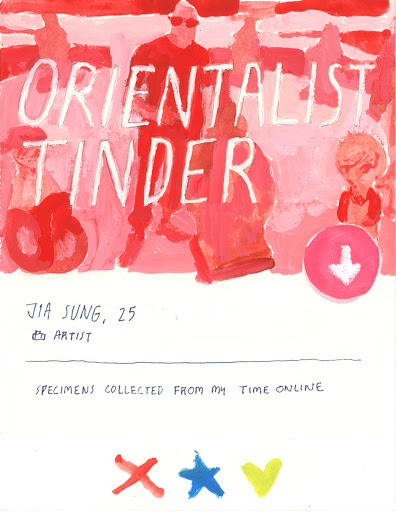
Working with artist books has led me to so many cool communities–from writers, poets, researchers, to publishers such as Endless Editions. I first got involved with Endless Editions through their copy shop residency, where we collaborated to produce my tarot deck project, Trickster’s Journey. I also joined their work exchange crew around the same time, and it’s just been a really exciting place to make books, talk about books, think about books, and eat a lot of snacks!
I met the folks at Other Publishing, Rin Kim and MP, at NYABF recently, and loved the sharpness and compassion in their work and in our conversations.
Sarula Bao is a frequent collaborator and makes beautiful comics that explore threads of autobiography, queerness, and Chinese American identity.
Ley Lines is a quarterly publication which is sort of a call-and-response between the worlds of comics and fine art–every issue features a different artist, who creates a comic in response to an artwork or artist. It’s run by thoughtful and wonderful comics folk Kevin Czap and L Nichols, who I had the pleasure of working with earlier this spring on my own issues of Ley Lines. Support!
Molly Liu
mozliu.bigcartel.com | poorlyconveyed.tumblr.com
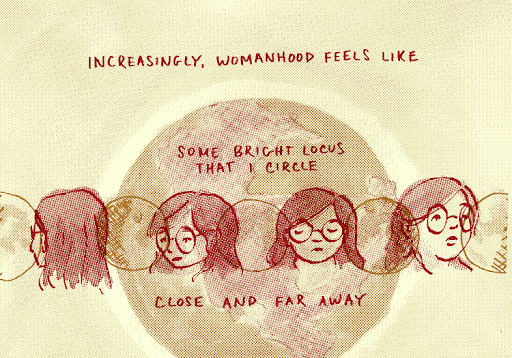
I’ve been drawing comics since high school, but I only started printing my comic zines in 2017. I’m drawn to print because I’m a pretty formally conservative cartoonist, putting my trauma into controlled little panels, and I appreciate both the layout constraints and the small accidents that can come with analog reproduction. And there’s nothing like seeing something I’ve made appear in the real world, showing up in a bookstore or in someone’s hands.

I’m just beginning to find a community through zines, and I’ve been blown away by the generous spirit of other zinesters. Really interesting art and writing can happen when there are no gatekeepers—besides your own monetary resources, which is why it’s so important to financially support zinesters. I’m constantly inspired by the work I see online or through trades at fairs. Some Asian American artists I particularly admire include Sunmi Shin, such gorgeously inviting art telling queer stories in brilliant colors; Niv Sekar, writing queer women of color into folklore; Anand Vedawala, tremendous breadth of work ranging from funny to poignant, personal to historical; Aatmaja Pandya, especially the comic Phantom, which may be the best thing I’ve read on gentrification and memory. A few Black and brown zinesters I love: Anhelo Escalante, heartbreaking poetry and art; Grace Alison Perkins, complex, tender, and extremely sexy queer romance; Lana C Marilyn, sharp and beautiful interrogations of desirability politics and mental health; and Higu Rose, hilarious scrappy transqueer comics.
Anand Vedawala
anandvedawala.com | @anandvedawala
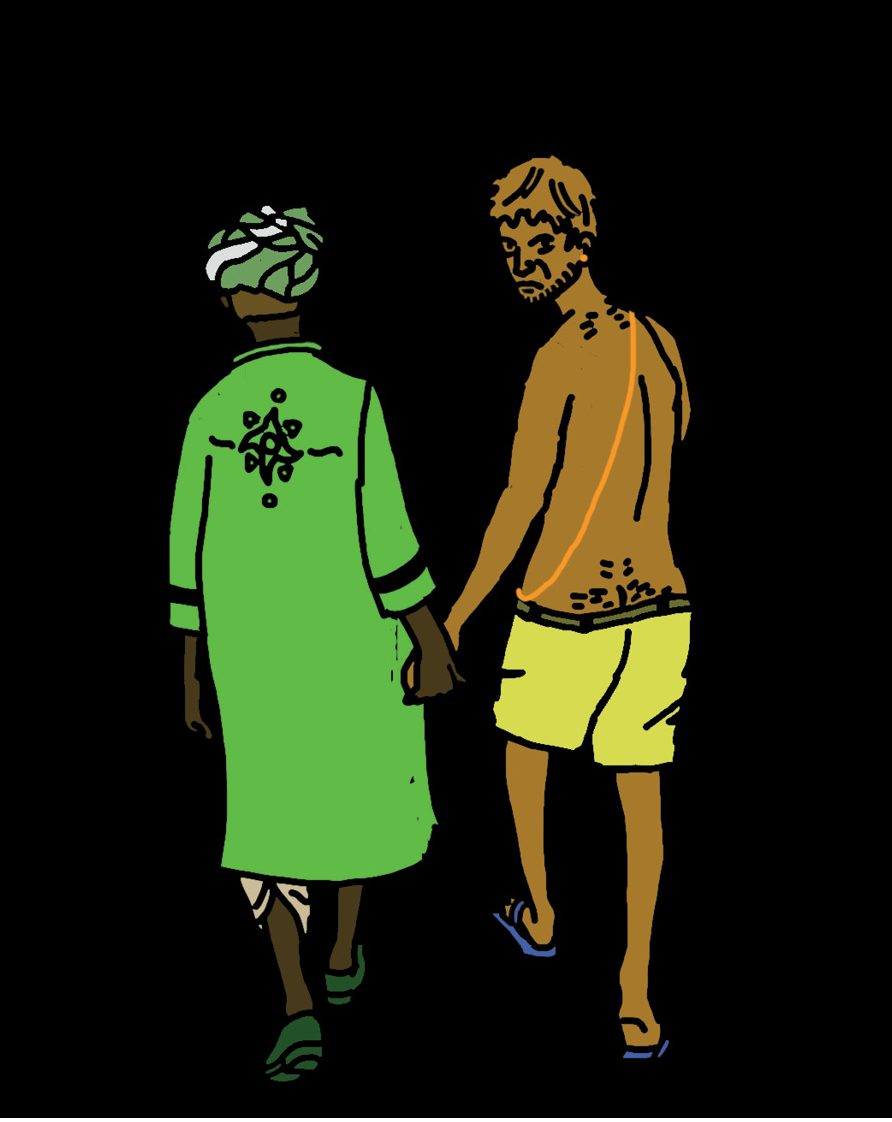 Civil Engineering led me to the world of zines. Well, several months into working as an engineer made me realize I needed to do something that would make me happy. I started making zines in 2009 after noticing a friend and I had wasted years complaining about not having time to make art—any kind of creative expression—because of work and school instead of just making said art. Enough was enough. We agreed to create and publish three works in six months. When other friends found out about this commitment to art, they asked to join the project too. That first year, there were 23 of us who contributed to the zine THREE. This year is THREE‘s 10th year.
Civil Engineering led me to the world of zines. Well, several months into working as an engineer made me realize I needed to do something that would make me happy. I started making zines in 2009 after noticing a friend and I had wasted years complaining about not having time to make art—any kind of creative expression—because of work and school instead of just making said art. Enough was enough. We agreed to create and publish three works in six months. When other friends found out about this commitment to art, they asked to join the project too. That first year, there were 23 of us who contributed to the zine THREE. This year is THREE‘s 10th year.
When I moved to San Francisco, I attended my very first zine fest, and that’s where I discovered the larger zine community. Being in that environment, surrounded by all those passionate and talented folks, inspired me to self-publish my own work. The first zine I made on my own was called Sadhana, and it was about my mom. I don’t know why but I just felt the need to share with everyone how amazing she is. Surprisingly, others enjoyed reading about my mom and even found the stories relatable. San Francisco Bay Area has a thriving zine community, so receiving encouragement from others is something that keeps many of us working. People supporting us by buying our works also keeps us going. Support living artists!
 Finding other queer zinesters of color has been the best part of attending zine fests. I wish my younger self had met queer South Asian artists when he was first trying to understand himself; he wouldn’t have felt so confused, alone, or out of place. I’m glad that now, as the executive director of San Francisco Zine Fest, I get to provide space for people in the community to share their voices loudly and safely. Marginalized voices, such as those of QTPOC, still need better representation and safer spaces, and I look forward to growing the efforts started by others before me.
Finding other queer zinesters of color has been the best part of attending zine fests. I wish my younger self had met queer South Asian artists when he was first trying to understand himself; he wouldn’t have felt so confused, alone, or out of place. I’m glad that now, as the executive director of San Francisco Zine Fest, I get to provide space for people in the community to share their voices loudly and safely. Marginalized voices, such as those of QTPOC, still need better representation and safer spaces, and I look forward to growing the efforts started by others before me.
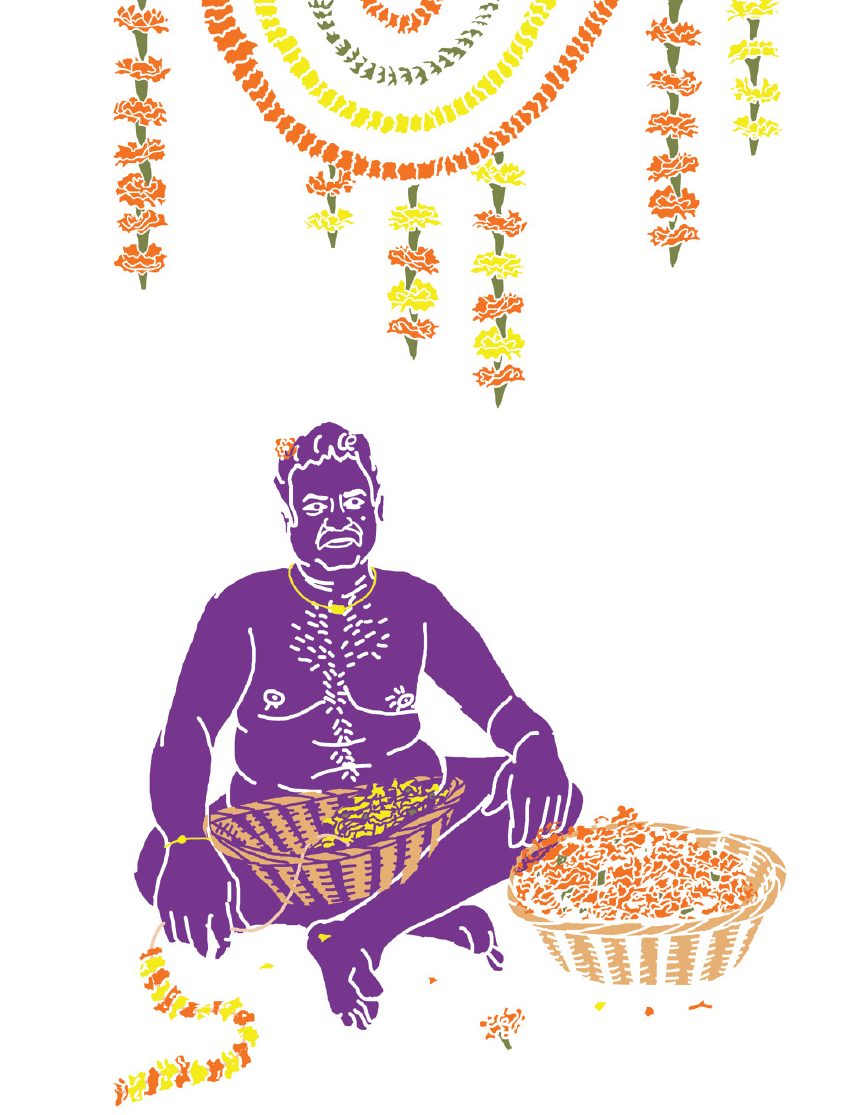
But, I have a soft spot for perzines. Zinesters I can quickly mention off the top of my head are Lawrence Lindell for sticking to much needed positivity and encouragement in a time when many of us need it like air (see his work From Black Boy With Love); Christina Tran for writing a better future for girls, particularly for a hypothetical daughter, in Dear Daughter; Jeff Cheung for expressing masculinity in various bodies and emotions; Breena Nuñez for writing about her Afrolatinx identity and experiences with a mix of geek culture; Neil Ballard for showing reverence to the history of now-gentrified neighborhoods in his “illustrated journalism” zines; and MariNaomi for her memoir comics and, of course, for founding the Cartoonists of Color Database and the Queer Cartoonists Database.
Then there are those who’ve been part of the zine community for a while and are now focusing on graphic novels. Artists such as Nidhi Chanani, whose Pashmina gave a unique perspective of an Indian American teenage girl’s relationship with her mother and India; Trinidad Escobar for making kickass work as usual regarding identity, trauma and culture; and Thi Bui for her powerful and poignant graphic memoir The Best We Could Do.
Jenny Lin
banddpress.blogspot.com | jenny-lin.ca
 I started making zines in grad school, in early 2000, as a way to give myself permission to make something spontaneous, hopefully unpretentious, uncensored and also, sometimes, a bit crass, filling ripped up printer paper books with really scribbly, juvenile-looking drawings. It was a way to let out steam but I also liked the immediacy of the activity and form. Visiting the comic book stores in Montreal that carried zines also was greatly inspiring. Later on, in 2009, my partner Eloisa Aquino and I decided to sign up for a table at Expozine, a yearly indie-press, comics, and zine fair that happens yearly in Montreal. We both were inspired by the liveliness of the event and the accessibility of zines.
I started making zines in grad school, in early 2000, as a way to give myself permission to make something spontaneous, hopefully unpretentious, uncensored and also, sometimes, a bit crass, filling ripped up printer paper books with really scribbly, juvenile-looking drawings. It was a way to let out steam but I also liked the immediacy of the activity and form. Visiting the comic book stores in Montreal that carried zines also was greatly inspiring. Later on, in 2009, my partner Eloisa Aquino and I decided to sign up for a table at Expozine, a yearly indie-press, comics, and zine fair that happens yearly in Montreal. We both were inspired by the liveliness of the event and the accessibility of zines.
We started B&D Press that year and I started teaching an artist’s book class at Concordia University the year after. I’ve been really interested in the way that zines and artists’ books have led Eloisa and I to be really involved and connected with various communities, bridging our experiences of contemporary artist-run spaces with those of grass-roots community spaces and events. The zine-making has led us to do collaborations with other queer artists, offer workshops, participate in exhibitions and panels, and have great conversations and exchange with other artists and zine fair attendees. We both tend to prefer the energy and environment of zine and art book fairs over gallery spaces because there just seems to be a more direct and immediate contact between artist and audience. I’m especially interested in queer zine communities or QTBIPOC zine communities as I really feel like zines offer a platform for marginalized voices and perspectives to be heard, and I hope to be able to encourage and support other QTBIPOC zine makers.

My work tends to be narrative-based and autobiographical, although I blend together fiction with autobiography. Lately, I’ve been working on text- and image-based zines that are personal and confessional but in a really fragmented way. The image and text doesn’t really correspond literally in these works but the images are things observed in my surroundings that I draw from photographs or from memory that I use to set a mood or tone and to create rhythm and contrast with other panels or pages.
A few zine makers / artists who I’ve been excited about recently are Eli Howey, Chihoi, and Céline Huyghebaert (it’s hard to select just a few people. I feel like I’ve been so lucky to know so many inspiring zine makers and artists).
Taehee Whang
taehee-whang.com | @whitemalepainter
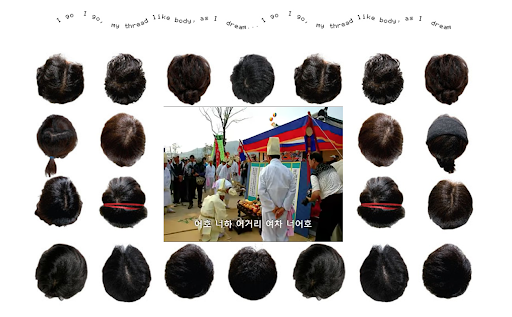
I got involved with the zine world through Endless Editions’ From there I have been able to meet other artists also weaving their visual and writing practice through printed matter. The wonderful thing about the zine community for me is witnessing reader’s appreciation directly. Since my zines are about my experience as a nonbinary Korean American navigating Korean womanhood and family responsibilities, I have memorable encounters with other zine enthusiasts who are often from queer Asian communities relating to my work.

Out of my zine collection, Jeong Lee’s Painting with Joy is always my favorite. Her juxtaposition of texts and internet visuals are zany and out of the world.
I’m excited by Studio Human Beings and their project. It is always great to see more fellow Korean femmes actively engaging with their identity through the printed medium.
